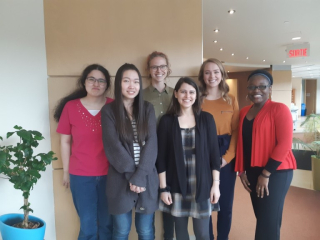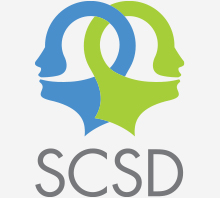In the world of literacy, a distinct pattern in children’s skills has emerged: across time and cultures, boys tend to underperform in reading. Are girls truly better readers than boys - and if they are, what is causing this divide in proficiency? Dr. Susan Rvachew of the School of Communication Sciences and Disorders (SCSD) led a seminar class in investigating this issue. The students were four second-year students in the speech-language pathology master’s program – Hope Anderson, Rebecca Nishimura, Sarah Bogdanovitch, and Emily Jarvis – as well as two students from the thesis research program, Ying Ying Liu and Dahlia Thompson. The students worked together to find some answers, first reviewing the scientific literature, and then summarizing it in a series of blog posts at www.digitalmediaprojectforchildren.worpress.com.
What does the research say?
It appears that there are multiple factors that potentially contribute to the gender gap. This difference emerges before children of either gender enter the literacy stage; thus, even before explicit reading and writing instruction, there seems to already be a female advantage. This advantage is most noticeable for taught skills, such as recognizing letters and matching these to sounds, which is important when acquiring reading skills. Furthermore, reading relies on coordinating high-level mental processes: these skills, known as executive functions, have been shown to develop at a slower pace in boys. These skills include self-regulation, which is important for following instructions and engaging independently with learning activities in the classroom. Lastly, motivation and social biases may also contribute to this gender gap. Beliefs such as the idea that girls perform better in language-based fields and boys perform better in mathematic-based fields can affect how children view themselves. This creates a sort of self-fulfilling prophecy where boys believe that girls are inherently better at tasks such as reading, which in turn affects their performance in such tasks. However, we don’t yet know the full story about why the literacy gap exists – more research is required to understand exactly why it happens and what we can do to prevent it in the future.
Don’t worry, the SCSD has your back!
In the meantime, no need to worry, the group also put together tips and recommendations for teachers, parents, and speech-language pathologists (S-LPs) to improve boys’ reading skills and close the gap. It is important to note that the following tips and recommendations are by no means exhaustive, and the research is ongoing and not yet conclusive.
Here are some tips and recommendations for parents, as suggested by the research group:
- Parents are encouraged to engage in reading with their little ones using interactive and supportive approaches.
- Parents are also encouraged to go along with and validate their child’s interests.
- There are many community programs and resources to help parents to learn how to read with their children. Not only do parents learn through participation with these programs, they can also interact with other parents and problem-solve together. For example, for families living in Quebec, Literacy Quebec connects parents with bilingual tutoring, toolkits, reading events, and other literacy services. (For more information visit www.literacyquebec.org.)
Here are some tips and recommendations for teachers:
- As discussed above, it is important to become aware of our own gender biases. Teachers are encouraged to create reading spaces that welcome all children and don’t assume that boys and girls will be interested in particular kinds of books or topics.
- Teachers are encouraged to have a multitude of options, such as fiction, non-fiction, comics, and magazines available in the classroom. A broad variety of genres and topics allows the children to explore and discover their own interests. It is important to remember to encourage and validate students’ choices in order for them to continue to see reading in a positive light.
- Teachers are encouraged to foster intrinsic motivation within their students towards reading (as opposed to only reading for rewards or other extrinsic factors). Encouraging autonomy and congratulating students on taking on more challenging tasks rather than many easy tasks is a great way to go!
Lastly, here are some tips and recommendations for Speech-Language Pathologists:
- Children who are struggling with reading may benefit from one-on-one practice with phonics and reading comprehension; this does not need to be done with an S-LP, but has been shown to be effective using adult volunteers.
- Use a “think-aloud” strategy when reading to children. In this technique, the adult reader works through comprehension strategies out loud to demonstrate their use to children. S-LPs can train teachers in this technique in order to have a broader influence and target more children at a time.
- Reading issues are often due to underlying language deficits, so building up a solid foundation of language skills is a technique S-LPs can use to improve reading skills; specifically, oral language groups in the preschool years focusing on areas such as vocabulary, comprehension, and narratives may be beneficial.
Narrowing the gap between the research and the public.
This was a unique opportunity for the students, not just to practice answering research questions, but also to get experience in disseminating information and creating resources. Bogdanovitch, one of the students involved in the project, says, “While the literature review was a big part of our project, we were all really committed to the idea of creating a resource that would actually be useful for educators, parents, and SLPs not in the academic community. So, on one hand our project was about the research question we had in mind, but on the other it was about learning to translate research results to the general public”.


